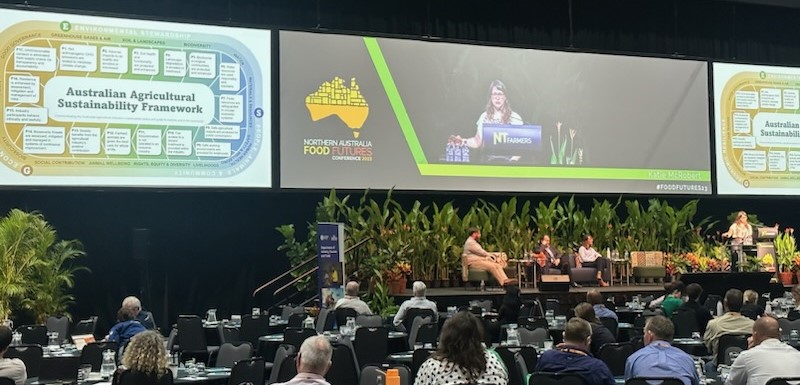
It was great to attend the Northern Australia Food Futures Conference (NAFFC) in Darwin last week. The 30+ degree days were a bonus compared to the frost of Orange, but the best thing was the chance to learn so much about the big issues, opportunities and challenges facing northern farmers.
The bi-annual conference brings together farmers, researchers, investors and industry experts from the northern regions of the Northern Territory, Western Australia and Queensland to network, share insights and showcase & promote agriculture across the vast region.
It’s heartening to see such cooperation across state borders with all the relevant NT, WA and Qld government departments and agencies throwing their support behind this significant gathering. Hosted by the NT Farmers Association, the whole event was a testament to their dedication to growth and collaboration.
Agriculture conferences sometimes feel like talkfests with more experts and advisers than actual farmers in attendance. I can say that’s definitely not the case at the NAFFC.
Growers were very well represented at the event and I got the really strong sense that they’re all heavily invested in the growth of the industry in the north, and very open to new ideas and productive collaborations to ensure that happens.
The spectacular NT horticulture failure at Fogg Dam, back in the 1950s by an American-backed rice farmer and many other ‘big dream ideas’, are emblematic of the harsh realities of operating and pioneering in the north.
This conference saw everyone sharing, collaborating and being willing to support this latest phase of the northern push. From Kununurra to the QLD Gulf and Katherine to Darwin, it seemed that a rising tide would float all boats. There is now capital, knowledge and collaboration that will finally unlock the north’s true value and opportunity.
While mangoes are synonymous with the NT and North Queensland, there was plenty of discussion about the expansion of markets for other tropical fruits including rambutan, durian, finger lime and jackfruit.
There’s a buzz around jackfruit right now because of its potential as a meat substitute in the growing imitation meat market. I doubt our cattle farmers have anything to fear, but developing the jackfruit industry is another example of the north’s willingness to diversify to become more sustainable and profitable.
It was interesting to learn that cotton as an emerging industry is expected to generate $250 million in the NT within a decade and 95% of the crop is grown using rainfall only.
Looking at past industry failures in the NT, has really shaped the testing and business case review for cotton. It is obvious that cotton is a great crop, but overcoming the issues of varieties, logistics (machinery, freight and ginning) and labour need to be slowly built upon.
The left-field emerging value for cotton in the north is actually as a feed source for cattle (cotton seed) rather than the traditional lint (as is here in Central and Northern NSW).
If this is the trigger that can open up the cotton industry in the north as a complementary industry to the incumbent cattle industry then there is a great future where considerably small areas can be dedicated to a high-value crop that protects the industry from drought and reduced productivity.
This year’s Food Futures Conference included an AgTech Showcase for the first time. Technologies that foster growth, innovation and efficiencies were demonstrated and discussed in great detail.
It was inspiring to meet with so many of the key players to demonstrate how Pairtree can drive efficiencies on their farms and to discover how we can tailor our offering for new and emerging agriculture sectors in the future.
There is no doubt AgTech will play a huge role in the future of food production in the north and Pairtree is proud to be one of the sponsors of such an important event.
Sign up to our e-News and be the first to hear about Pairtree’s latest offers & news and receive fresh insights on new trends in Australian farming and agricultural technology.